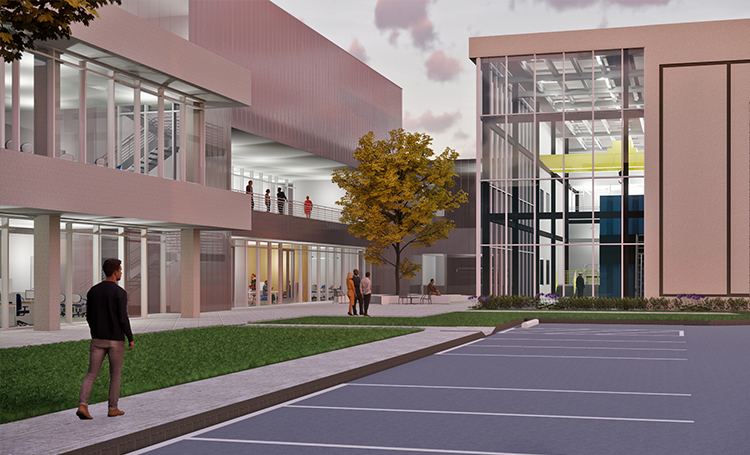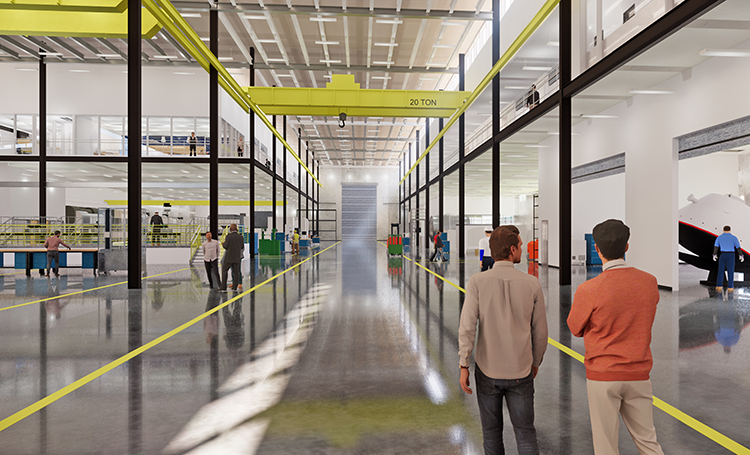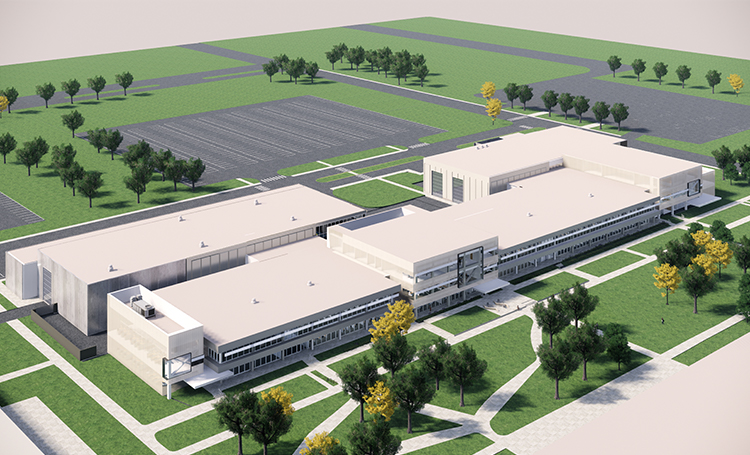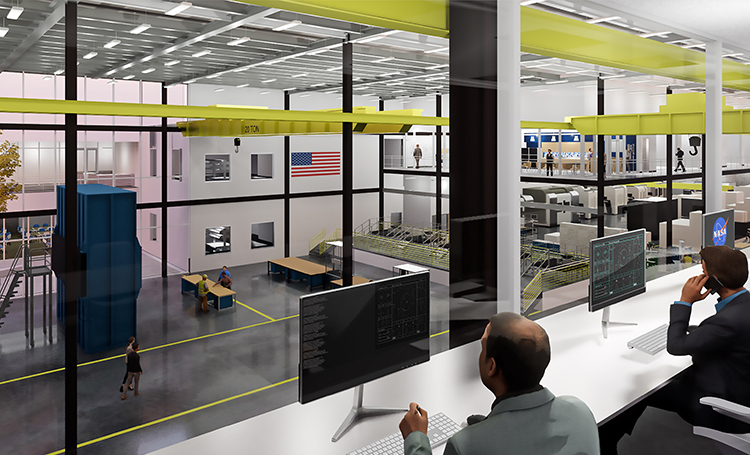RS&H Sets New Path for Johnson Space Center EA Directorate Complex
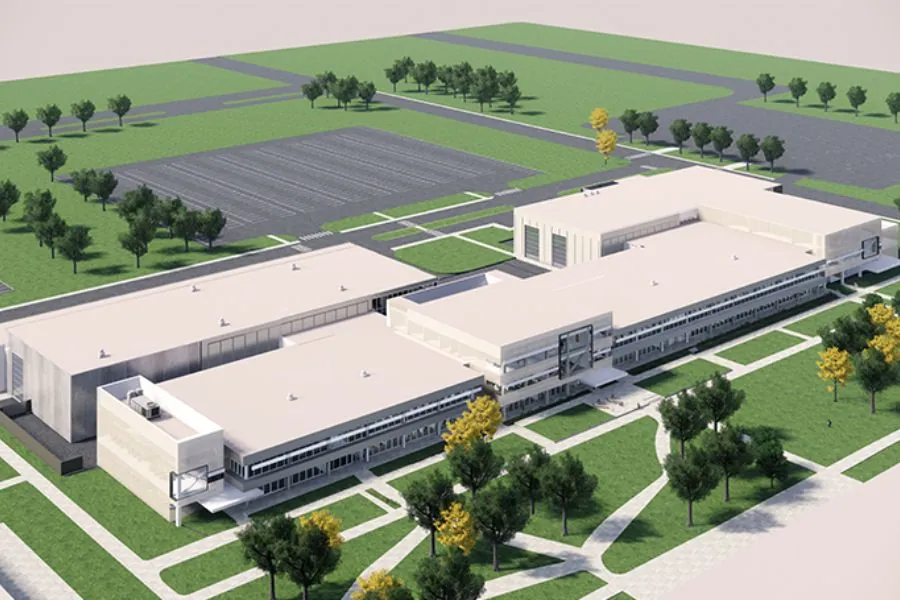
Of NASA’s directorates that call Johnson Space Center (JSC) home, the Engineering Directorate (EA) is the largest.
The group is spread across nearly 20 buildings and 1.4 million square feet of existing engineering offices, conference rooms, labs, high bays and flex-use spaces. The Directorate’s nine divisions are responsible for providing engineering design, development and test support for NASA’s human space flight programs and projects.
In order to improve mission efficiency and operational costs, the NASA JSC leadership set out to optimize the EA’s operations into a consolidated footprint while incorporating Net Zero principles. The goal was to optimize the footprint by approximately 40% through the consolidation and reconfiguration of existing spaces.
Driven to consolidate and adapt the EA campus for its evolving missions and workforce, NASA officials turned to RS&H to study and provide concept designs that aligned with the team’s existing work on the NASA JSC Master Plan and JSC Historic Preservation‘s vision for footprint optimization, demolition, architectural and historical preservation.
Gaining Scope (and Size)
The EA Directorate had spread across the JSC campus more and more over the last 60 years. Aside from the initial design in the early 1960s, there was no real master plan for what came next for the group. As a result, EA workers in the Directorate’s nine divisions now must make their way through an inefficient maze of offices and buildings.
Recognizing a need to bring the directorates on campus closer together, JSC officials called for every division to consolidate and tighten its footprint. Already working on the master plan for the campus, RS&H was tagged to study the EA Directorate and their spaces to determine what consolidation could work.
“The JSC leadership was very open and gave us a lot of freedom in solving this problem,” said RS&H architect Scott Coleman. “The main objective – what they were really focused on – was finding 40% of the space that we could optimize.” The first step: Bring the nine EA groups together to find a consensus.
Reimagining a New Facility Program
The RS&H team worked with each EA division to learn about its existing program spaces, divisions, square footages and locations. They created a new facility program that examined existing space that had to stay as-is – some of the equipment is so massive that it cannot be moved.
“We looked at all the duplicative spaces to determine which could be consolidated and shared, what space wasn’t needed anymore and what spaces needed to be added,” Coleman said. “We took all of that and built out a new facility program that listed every new space, the square feet and ideal building location. That was the first step.”
With a facility program in place, the team could start to figure out square footage and how to fit more pieces together. The EA study had become a space planning and adjacency exercise, and then a phasing exercise – how to get associates out of one space and into another, what facilities needed to be built and what needed to be torn down.
“At the end of the day, what we had was a plan for a brand-new facility program,” Coleman said. “We could show the EA exactly how much square footage they needed, where it needed to go on campus, how much new construction was needed, how much renovation needed to occur, and which buildings could be razed.”
“It was very thorough, and it was quite the task, but we ultimately gave them exactly what they wanted.”
A Deeper Understanding of Needs
To gain more insight into the project, RS&H’s Aerospace & Defense associates brought in Michael Vascellaro and Andrea Hook from the firm’s Corporate, Health & Science team. The two architects had worked with different science groups on the JSC campus before, and they were able to connect with the EA user group to understand the complexities of their work.
“Michael and Andrea were phenomenal,” Coleman said. “They were able to work with the user groups we were dealing with and speak their language, understand the complexities of the materials that these scientists deal with and the critical nature of separation of certain activities and spaces.”
Working together with EA stakeholders and the JSC Center Operations Directorate (COD), RS&H led a five-day vision and programming charrette to develop the facility program and concept design that consolidates all technical EA capabilities into a unified core campus.
The Core Campus Comes Together
The RS&H team proposed a new footprint at the end of the EA study of 448,523 square feet, down from the existing EA footprint of 716,445 square feet.
The study focused on several of the EA’s buildings – Buildings 13, 15, 16, 9 and 10 – which are all close together at the front of the JSC campus. With the goal of the JSC master plan being to not construct new buildings but instead optimize existing structures, Coleman and his team had to play out all the costs associated with renovating and/or adding onto buildings.
“Ultimately, we took adjacent Buildings 13 and 15 and proposed an addition between them to connect them, with two more additions on either side to create one large complex,” Coleman said. “Not only did this consolidate the footprint, but it also minimized the contractors’ impact on campus, which was a tremendous benefit. We worked to phase construction around 13 and 15, so that the EA groups could continue occupying portions of their buildings throughout construction.”
The facility plan also restores a lot of high bay space, much of which had been taken over by other missions that didn’t need the extra room. This valuable real estate will be reclaimed and, when needed, expanded.
RS&H provided detailed phasing analysis and diagrams, a project timeline and rough order of magnitude budget information. This info allows NASA to have tangible numbers for programming and funding requirements needed for the optimization.
During development, JSC asked the RS&H team to incorporate real-time data from the project into the JSC master plan. To accomplish this, RS&H adjusted work schedules and deliverable dates, and provided flexibility for additional meetings and reviews, to ensure that the latest documentation was incorporated into the master plan.
Looking at what NASA and RS&H were able to accomplish, both parties can point to this finished project as a true partnership.
“We were flexible with the EA, in the same way that they gave us flexibility on where they wanted to see this study go,” Coleman said. “It became an honest RS&H-NASA team all working together – they gave us a task order to sit down and figure this out with them, and we needed their expertise in consolidating these functions.
“Because we all came to the table realizing we needed each other to get this done, that’s what set us on a path to success.”
Learn how RS&H’s aerospace services can bring your next project to life.

